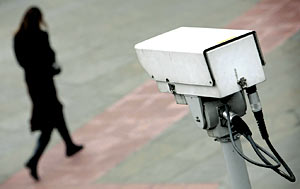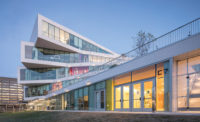As part of his recently released plan for New York by the year 2030, entitled PLANYC: A Greener, Greater New York, Mayor Michael Blooomberg is actively promoting a scheme for congestion pricing in the busiest parts of Manhattan. Modeled on programs in Singapore, London, and Stockholm, the system is intended to curb vehicular traffic (and raise money for public transportation) by imposing charges ($8 for cars and $21 for trucks) to enter the borough below 96th Street. The proposal has the support of virtually every bien-pensant urbanist in town, although it has met some resistance, particularly from the outer boroughs and suburbs where car dependence is highest and public transport thinnest. And there are many who suggest that the burden of the charges will fall disproportionately on the poor.

I certainly support radical measures to reduce traffic in Manhattan, and congestion pricing has a good track record in the cities that have tried it. But there is something disquieting about the system. The arguments that it will be a trivial burden to the man in the Mercedes and a serious one to the busboys in the battered banger have real merit. But what really chills me is the means by which the system will be run. As in London, routes into the city are to be monitored by cameras that will photograph all incoming cars and record their license numbers, information that will be used to generate the necessary billing. And the system will presumably be capable of other levels of photographic observation and will surely be linked to other networks and databases administered by our anxious state.
Tracking cars and people
Earlier this month, the front page of The New York Times carried a story headlined, “Police Plan a Web of Surveillance for Downtown—Like London Ring of Steel—A Call for 3,000 Cameras—New York Seeking More Antiterror Aid.” These cameras would join close to 5,000 private and public security cameras already in operation in Lower Manhattan. Technologically speaking, the plan is identical to the apparatus for congestion pricing—for its reliance on cameras and license-plate scanners; its potential to incorporate face recognition software and other suspicious algorithms; and the massive, largely unregulated, database it will compile. While the police disingenuously offer that a closed-circuit TV camera on the street is equivalent to an additional cop on the beat, civil libertarians suggest that there is an important difference between simply being observed in a public place and having information about your movement, activities, and whereabouts recorded, stored, and shared.
The authoritarian risks of such systems are thrown into particular relief by their congeniality to more unabashed authoritarian regimes. The Chinese government is in the process of installing more than 20,000 CCTV cameras in the city of Shenzhen (with face-recognition software provided by a U.S.-financed company, China Public Security, incorporated in Florida) that are to work in tandem with new I.D. cards for all residents.
Storing lots of information
These cards will have embedded chips (again with software from China Public Security) that are to contain staggering amounts of information, including work, credit, and reproductive histories; religious and ethnic data; medical insurance status; transit payments; landlord phone numbers; police records; and room for lots more. And the Shenzhen police already have the capacity to track the location of all cell phones in use in the city. Clearly, such invasive systems threaten any reasonable idea of a right to privacy.
This transformation is fundamental. Cities—and the organization of space in general—are key media by which we sort out the boundaries between public and private; the public side of the equation is increasingly squeezed. The dramatic acceleration of surveillance post-9/11 is one marker of the contraction, and police agencies—public and private—are enjoying virtual carte blanche to intrude both in the traditional public realm (the streets of the city) and in the private, as well. As geographer David Harvey observes, “The ‘war on terror’ has everywhere been deployed as an excuse to diminish political and civil liberties.” The profusion of data-mining, phone taps, biometric screening, DNA testing, and other intrusive technologies are political and cultural developments of truly frightening implications, erosions of our most basic freedoms, including what Henri Lefebvre has famously called “the right to the city.” The supportive incorporation of “terror” as part of the standard repertoire of architectural and planning due diligence—like fire or seismic protection—is astonishingly sinister and far exceeds any simple utilitarian account. As a profession, we are far too compliant in advancing this threatening regime.





Post a comment to this article
Report Abusive Comment